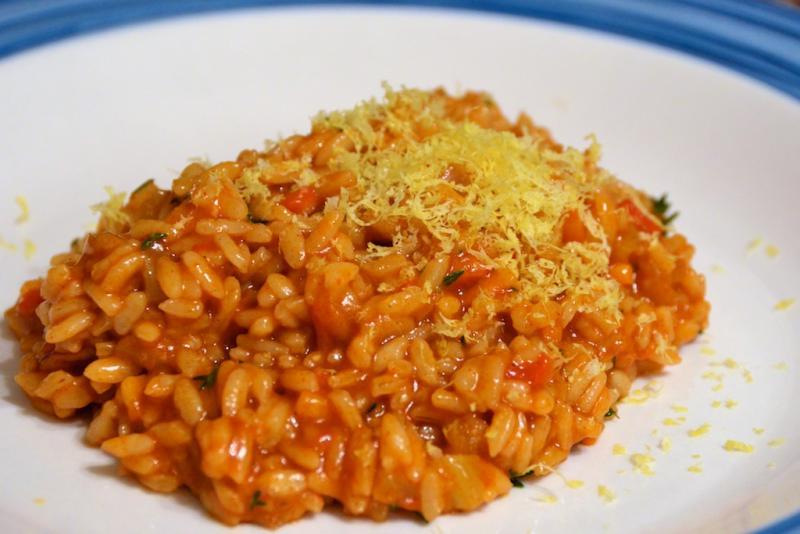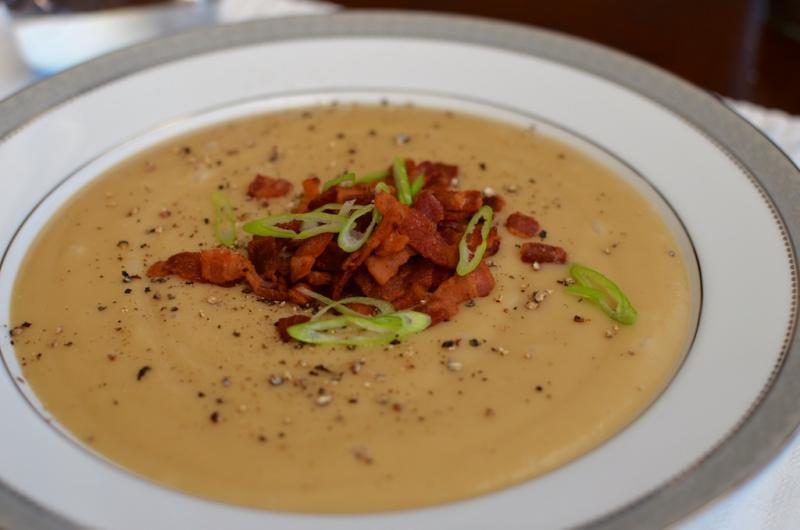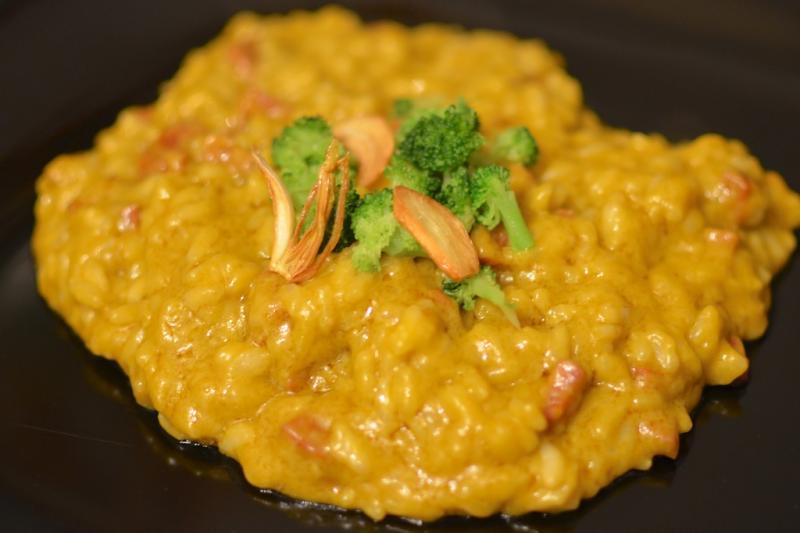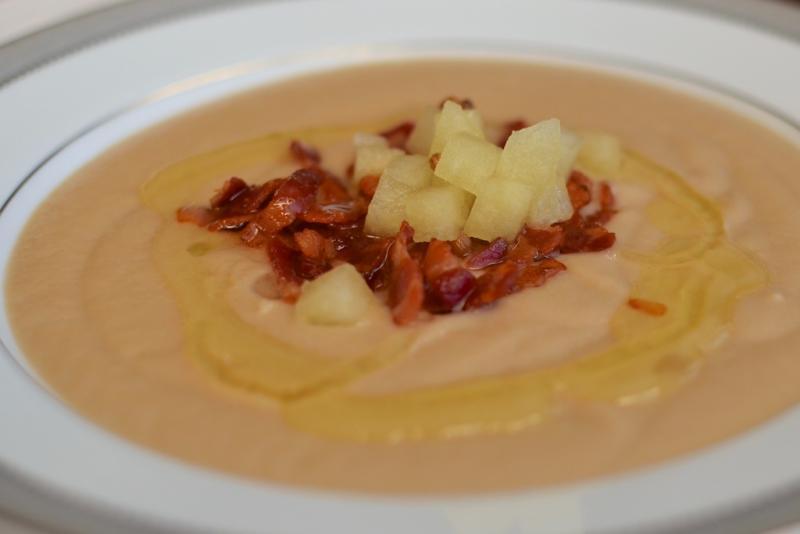-
Posts
10,190 -
Joined
-
Last visited
Content Type
Profiles
Forums
Store
Help Articles
Everything posted by Chris Hennes
-

"Consider the Fork" or is 1 calorie = to 1 calorie?
Chris Hennes replied to a topic in Cookbooks & References
I've always sort of wondered this myself: there's no reason to believe that our bodies are capable of actually extracting every single calorie out of a given food. How broad is the range of hardest-to-digest to easiest-to-digest in terms of actually extracting calories? -
It's worth noting that the Teamster's Union approved their most recent contract offer: it's the Baker's Union that's the holdout here.
-
Chris, can you provide some further information on that issue? In my experience, when you smoke something and then cook it sous vide after (typically for 2-3 days), the smoke flavor changes significantly. I'm not sure I have the appropriate vocabulary to describe the change in significant detail, but some of the smoke compounds will actually migrate out of the product through the bag, so you lose those. In addition, the smoke flavor becomes perfectly evenly distributed within the product, which I think leads to a perceived change in flavor as well. It's not clear to me if these are the only things going on, but food that is smoked and then cooked LTLT does not taste like something that is cooked in the reverse order, or in something that is simply smoked up to the desired temp and served.
-
No, actually, cooking smoked foods sous vide changes the smoke character quite a bit, but definitely doesn't amplify it. Some people really like the different flavor, and some don't.
-
Typically the browning action is so fast that it cannot possible affect the interior temperature: 60 seconds is a bit on the long side, IMO. You also shouldn't rest the meat after the browning step, just serve it immediately. 63°C is slightly too warm for pork, but I wouldn't think it would result in something that was dry: did you measure the temp after your rest?
-
I almost never actually take my pasta all the way to the thinnest setting, so there is certainly no rule that says you have to: presumably it was just a preference for thinner pasta on the part of the taster.
-
Yes, I don't think it will be a problem: you're really just using the jars for convenience in cooking small quantities, and ease of cleanup.
-
In my experience it's only ultra-pasteurized creams that have additives, the reason being that the heat changes the texture of the cream, and its whippability, so the additives are there to approximate the properties of the original. It's gotten nearly impossible to find non-ultra-pasteurized cream in my area.
-
No, no snails.
-
Pressure-Cooked Paella del Bosco (pp. 326-327) As we discussed earlier in the topic, you may regard it as something of a stretch to call this "paella". Setting that aside, however, it does taste good. Predominantly of paprika and saffron, of course, but there is a ton of thyme in there as well, and I really enjoyed the lemon zest (which I used as a garnish). Overall, it was very easy and fast to make, if more in the risotto school than the paella.
-
You don't have to manually agitate the rice, the simmering action is enough. I forgot to mention, drain off the liquid and store it separately before chilling the rice. Add it back in when you are doing the final cooking.
-
Modernist Cuisine advocates par-cooking and then quickly chilling the rice. They par-cook by simmering for six minutes, then cool by spreading it onto a thin layer on a chilled baking sheet. The trick is getting the quantity of liquid right: MC uses 225g of liquid to 100g of rice.
-
Is botulism actually the main concern here? If the food wasn't actually canned then you probably don't have an airtight seal and you haven't removed the air from the headspace of the jar to begin with. In that case I'd be more concerned about aerobic bacteria, potentially even introduced well after the food was cooked due to the poor seal.
-
Do you have any further requirements? It's just beef, after all: there are thousands of potential sauces/glazes/etc.
-
Well first, bear in mind that opinions vary on some of these things: for example, I personally don't think the pressure cooked purees have too much butter in them. Second, it's a very expensive book, so we are basically demanding perfection of it: when it falls short, you're going to hear about it. Third, those of us cooking from this book probably don't suffer from the "OMG YUM!" syndrome that sometimes plagues other cookbook topics, wherein people only post about the recipes they like, and not those they don't. All that said, yes, I think that in some cases they complicated things more than necessary.
-
This is different stuff, Michaela: predominantly vegetable purees and "risotto"s. It does PC some of the same stuff as MC: the carnitas, for example.
-
See also our "master" Paella topic here, and our Paella cook-off here. We've also discussed the best type of pan for Paella here. Eduard, what are your thoughts on using a pressure cooker for Paella? The recent Modernist Cuisine at Home cookbook stirred up a bit of controversy here with a completely socarrat-free pressure-cooked "paella."
-
Pressure-Caramelized Potato Leek Soup Not actually from the book, but using the pressure-cooked vegetable purees as a jumping off point. I used 500g of potato, 250g of leek, and vegetable stock as the liquid. It turned out really well, the caramelized (OK, "Maillardized"...) leek flavor was an interesting change to a conventional potato leek soup. Garnished with bacon (from the MC recipe, of course) and scallions.
-
I've owned my pressure cooker for years, and have used it more in the last three weeks than in the past three years, by a longshot: it's funny, when you think of modernist cooking equipment you usually think of the sous vide rig first, but as far as MCaH is concerned the pressure cooker is even more indispensable.
-
Bomba Rice with Chorizo and Broccoli-Gruyère Puree (p. 333) This was pretty bad. Not completely awful, but pretty bad. I think someone mentioned uptopic that they didn't care for the broccoli-gruyère puree: I didn't have a problem with it on its own. It wasn't fabulous (many of the others on that page are) but I liked it fine. Unfortunately, not only did it lend an odd color to this dish, but most of its flavor was overwhelmed by the massive amount of chorizo, and what was left was unpleasant. With that quantity of chorizo it's not clear why we bothered with any other ingredients, in fact; before the puree and olive oil were added it was an OK-tasting dish. I still never would have made it again, but it wasn't overtly bad. Once the broccoli puree was added the taste shifted into the "er, what the hell is this" category. What really pushed it over the edge was the 80mL of olive oil, though. Now, not only was the taste unpleasant, so was the texture and appearance. Don't say I didn't warn you...
-
Apple and Parsnip Soup (p. 181) Another simple pressure-cooked soup. Again, delicious: I particularly like the brown butter garnish. I used bacon instead of speck, which worked, and included the suggested pickled apples as well (I did include the calcium chloride in the pickle, and appreciated the added firmness).
-

Cooking with "Chocolates and Confections" by Peter Greweling (Part 2)
Chris Hennes replied to a topic in Pastry & Baking
http://egullet.org/p1895558 -
My copy arrived today: some first impressions (I have not made anything from the new edition yet)... It's considerably larger than the first edition: the bulk of the new material appears to be expansion of the text itself, covering more ground in more detail at the beginning of each chapter. There are some new recipes, but that was not the focus of this revision. As was true of the first edition the text is clear and concise: I appreciate the additional details given regarding decorating molded chocolates (for instance). I think that the book remains the most definitive confectionery reference available, and if you don't own the first edition the new edition would definitely be a great resource for you. If you already own the first edition things are less clear. I certainly wouldn't suggest keeping both: if you want the new edition, sell your first edition (I think amazon is still offering a few dollars, but I bet there are a lot of amateur confectioners who wouldn't mind a cheap copy of the first edition either). Is it worth upgrading? Well... probably only if you're the obsessive-compulsive type. Then again, that might still be most confectioners out there!
- 7 replies
-
- Confections
- Cookbook
-
(and 1 more)
Tagged with:





